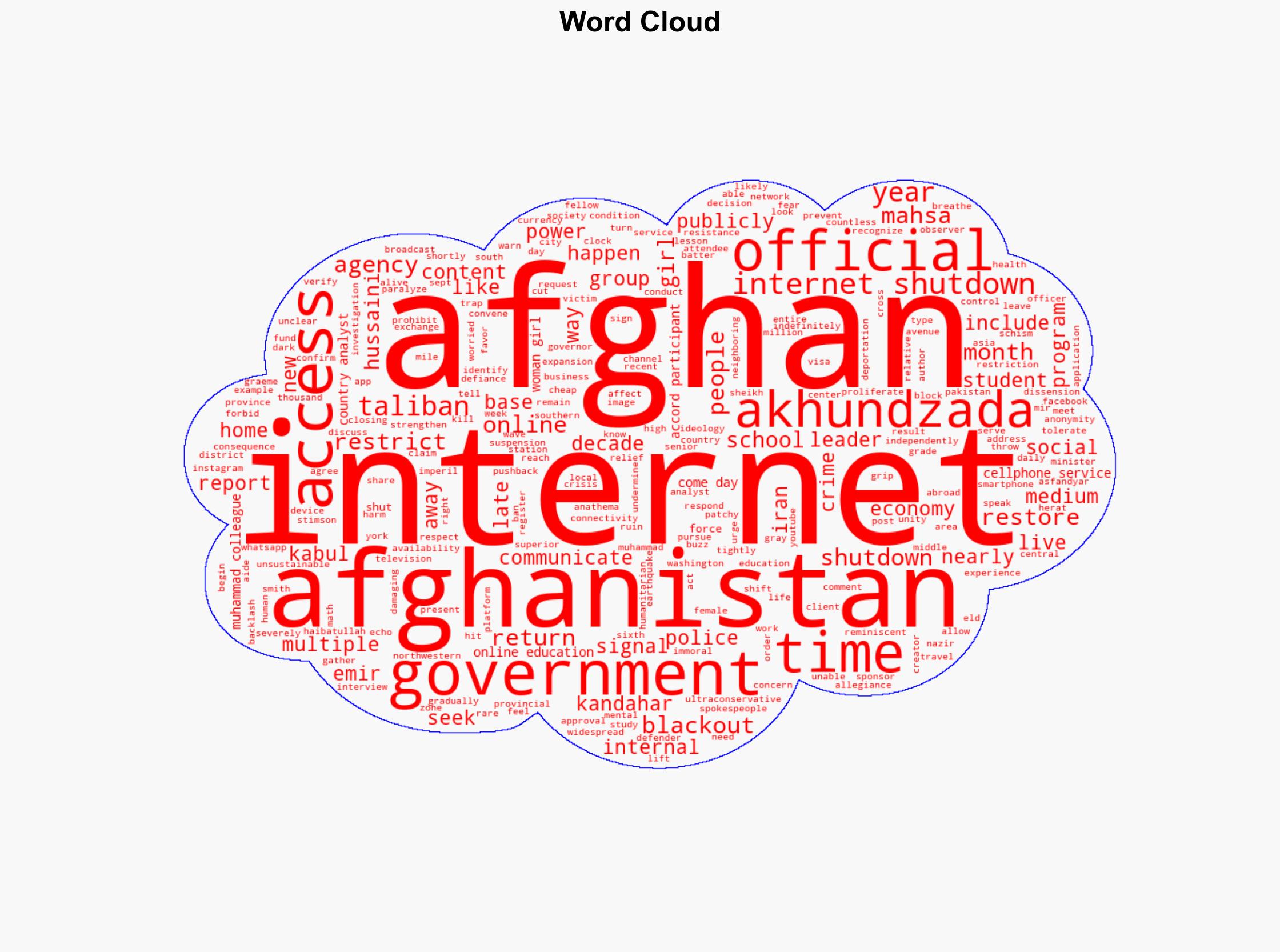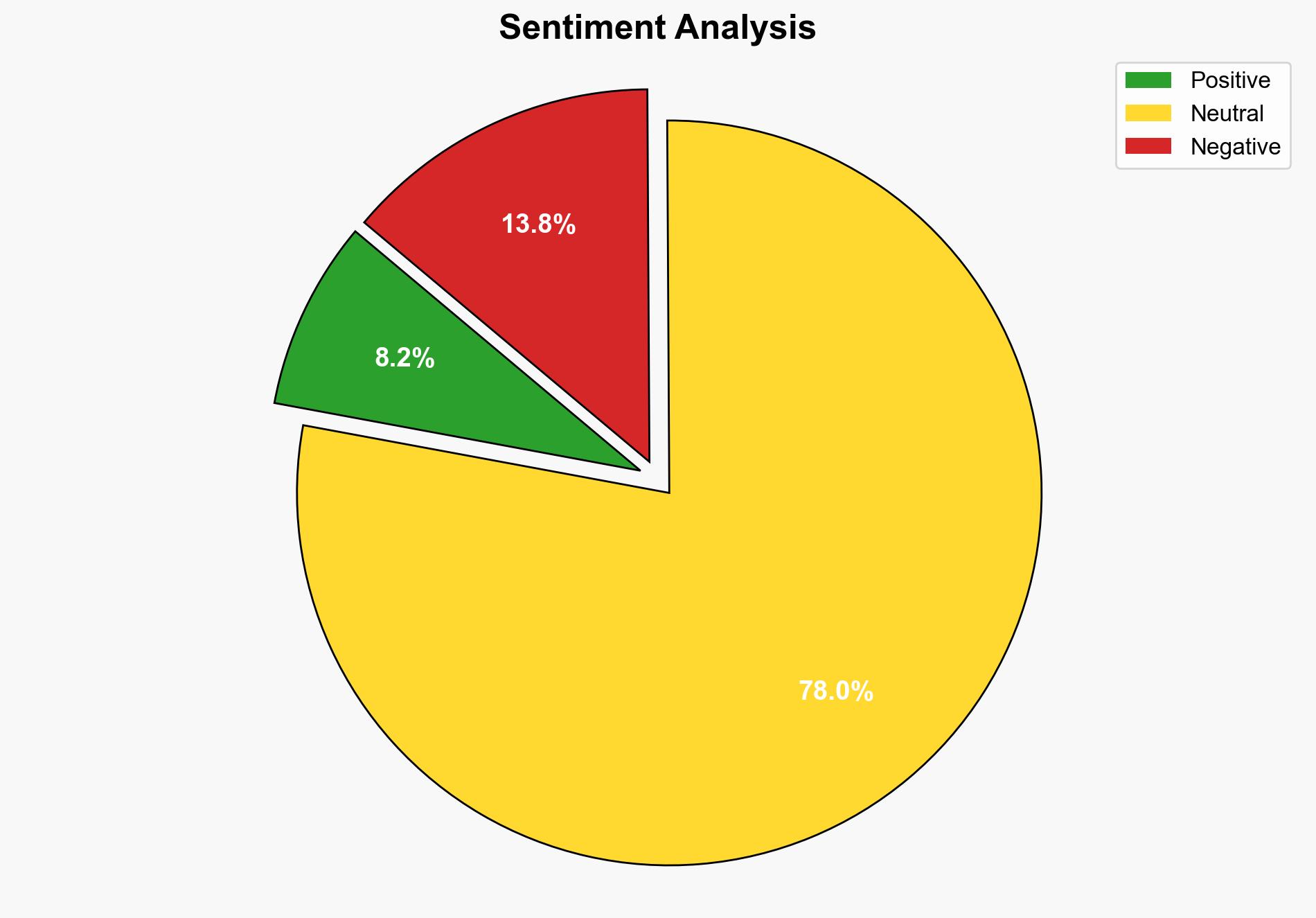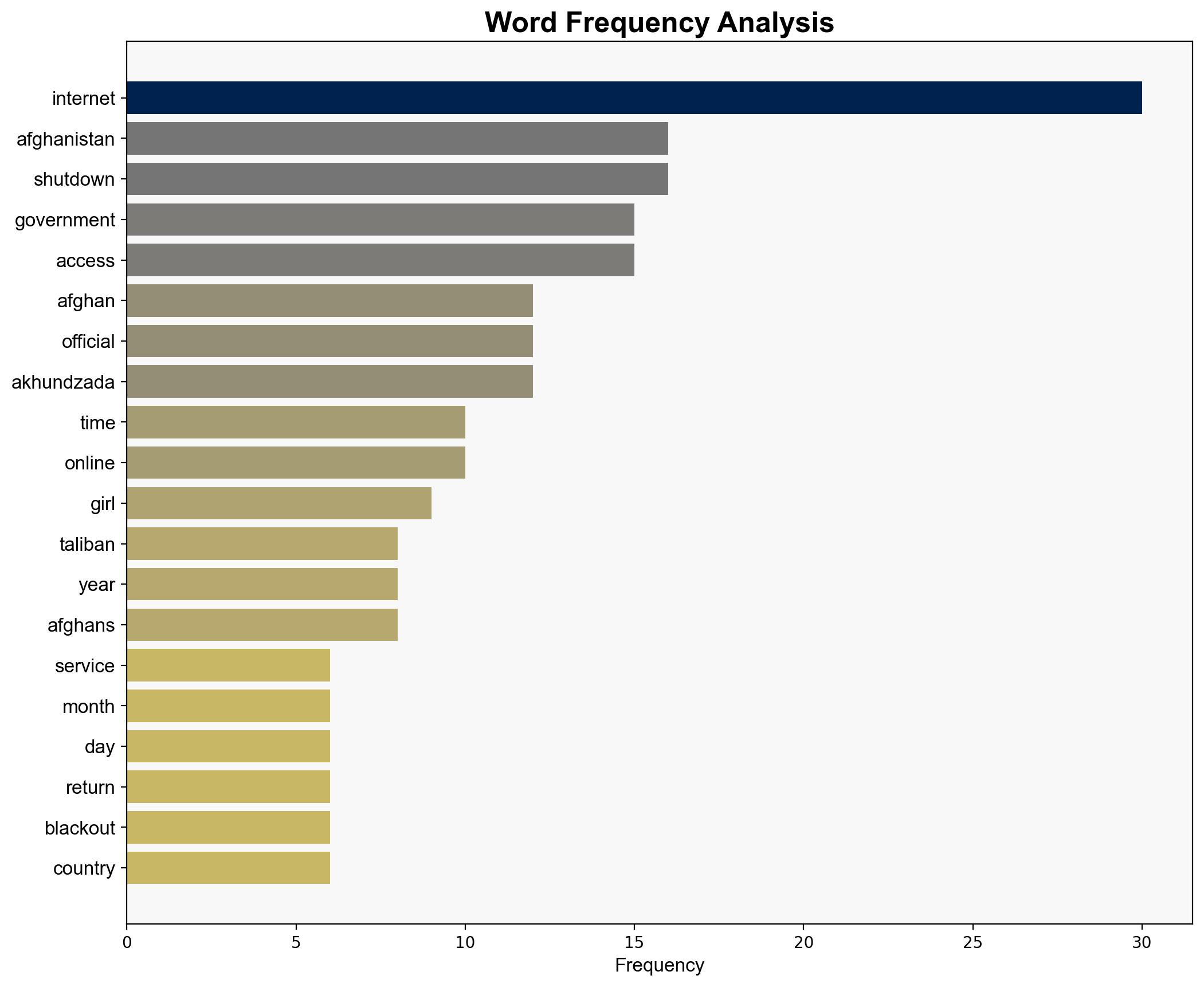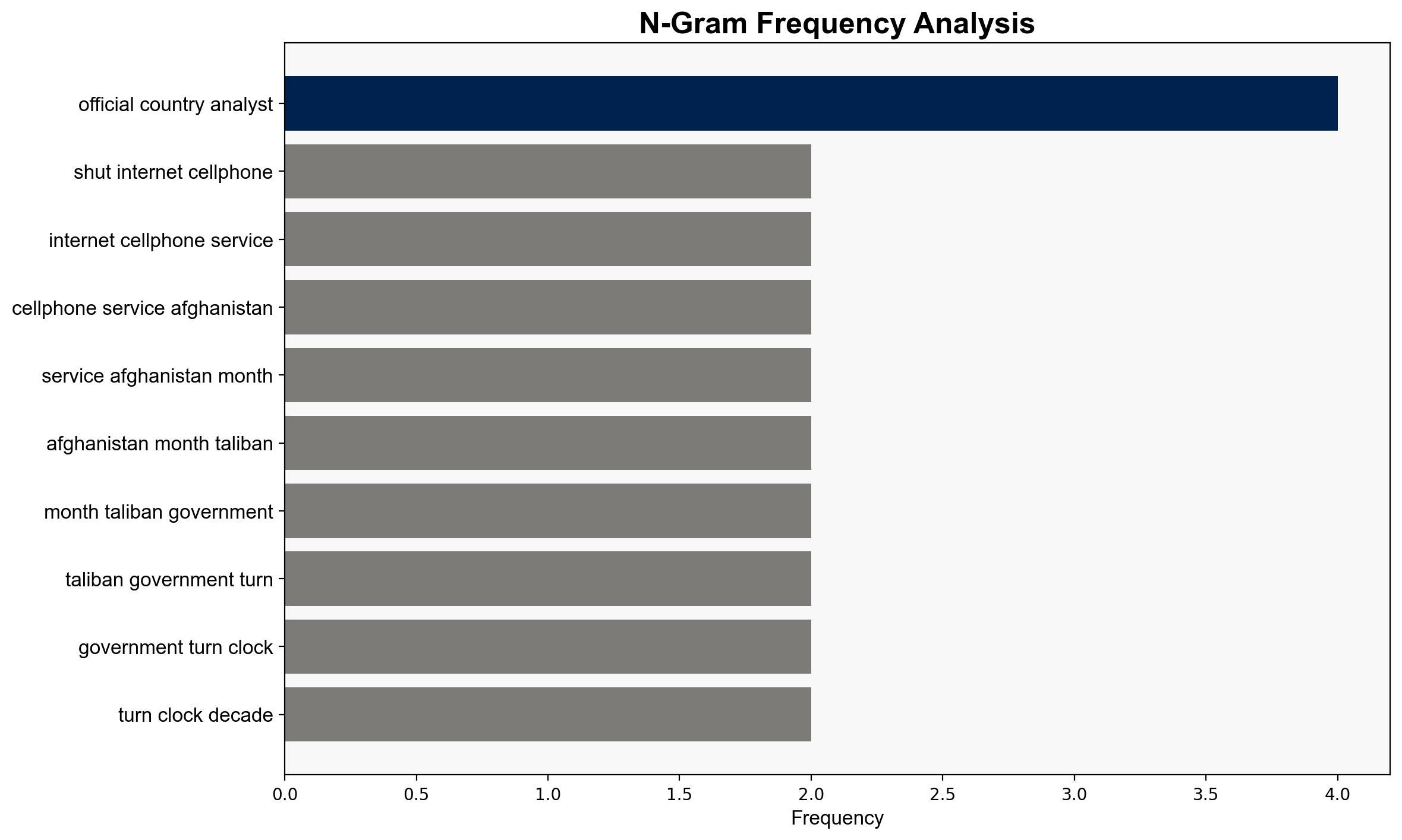Social media restrictions and two-day internet shutdown rattle Afghanistan – The Times of India
Published on: 2025-10-13
Intelligence Report: Social media restrictions and two-day internet shutdown rattle Afghanistan – The Times of India
1. BLUF (Bottom Line Up Front)
The internet shutdown in Afghanistan, ordered by the Taliban, appears to be a strategic move to consolidate control and suppress dissent. The most supported hypothesis is that the shutdown was intended to prevent the spread of information and restrict communication that could undermine the Taliban’s authority. Confidence in this assessment is moderate due to limited independent verification of internal Taliban dynamics. Recommended action includes monitoring Taliban communications for signs of internal dissent and preparing for potential humanitarian impacts due to prolonged connectivity disruptions.
2. Competing Hypotheses
1. **Hypothesis A**: The internet shutdown was primarily a security measure to prevent the spread of information that could incite unrest or challenge the Taliban’s authority. This aligns with the Taliban’s historical approach to controlling information and maintaining power.
2. **Hypothesis B**: The shutdown was a temporary measure due to technical or logistical issues, with no long-term strategic intent. This could be supported by the eventual restoration of services and the lack of official communication on the shutdown’s purpose.
Using ACH 2.0, Hypothesis A is better supported due to the Taliban’s consistent pattern of restricting information and the timing of the shutdown coinciding with internal meetings aimed at reinforcing control.
3. Key Assumptions and Red Flags
– **Assumptions**: It is assumed that the Taliban has the capability and intent to control internet access for strategic purposes. Another assumption is that internal dissent within the Taliban is significant enough to warrant such measures.
– **Red Flags**: The lack of official statements or clear communication from the Taliban raises questions about transparency and intent. The potential for deception exists if the shutdown is a cover for other activities.
– **Blind Spots**: Limited visibility into the internal decision-making processes of the Taliban and the actual technical capabilities to enforce such shutdowns.
4. Implications and Strategic Risks
– **Economic Impact**: Prolonged internet shutdowns could severely impact Afghanistan’s economy, particularly in sectors reliant on connectivity.
– **Cybersecurity Risks**: The shutdown may prompt increased cyber activities by opposition groups or external actors exploiting the situation.
– **Geopolitical Tensions**: Neighboring countries and international stakeholders may react to perceived instability, affecting regional dynamics.
– **Psychological Impact**: The population’s morale and trust in governance could deteriorate, leading to increased unrest or migration pressures.
5. Recommendations and Outlook
- Monitor communications from Taliban leadership for indications of policy shifts or internal conflict.
- Engage with regional partners to assess the broader impact of connectivity disruptions on stability.
- Prepare humanitarian support strategies for affected populations in case of prolonged outages.
- Scenario Projections:
- **Best Case**: Internet services are fully restored, and the Taliban clarifies the shutdown as a temporary measure.
- **Worst Case**: Prolonged shutdown leads to economic collapse and increased civil unrest.
- **Most Likely**: Intermittent shutdowns continue as a tool for control, with gradual restoration to avoid economic fallout.
6. Key Individuals and Entities
– Sheikh Haibatullah Akhundzada: Leader of the Taliban, reportedly behind the shutdown decision.
– Graeme Smith: Analyst with extensive experience in Afghanistan, providing insights into internal Taliban dynamics.
– Nazir Hussaini: Affected business owner highlighting economic impacts.
7. Thematic Tags
national security threats, cybersecurity, counter-terrorism, regional focus




